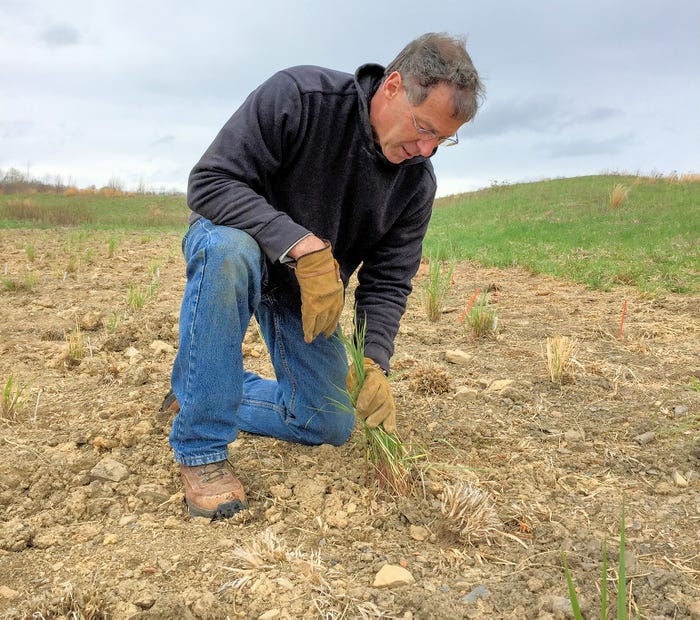June 8, 2017

Sometimes it’s hard to see the potential of barren, rock-filled strip-mined land. And Pennsylvania has hundreds of thousands of such unreclaimed acres. So what can you do with that kind of land?
Marvin Hall, a Penn State University forage agronomist, is working on a potential solution to bring that damaged land back to a productive state. But what could possibly be productive there? One possibility is switchgrass, an alternative fuel crop.

RECLAIMING ‘MOONSCAPE’: Turning strip-mined land into productive land may be Marvin Hall’s greatest research challenge.

“If we show that land can be highly productive after mining, then maybe we'll see fewer abandoned strip mines and more grassy fields," he postulates. His “research field of dreams” is a Clearfield County property that had been deep mined about 50 years ago, then strip mined in the mid-2000s. Post-mining remediation with lime, fertilizer and a 10-inch layer of rocky earth did little, if anything, to restore it.
Bring on the switchgrass
Hall first visited the site in 2008. “It looked like a moonscape — filled with rocks and boulders. The soil had poor water-holding capacity, all common problems after strip mining," Hall says. "I honestly didn't know how we were going to get anything to grow on it."
Then came switchgrass, a hardy, deep-rooted perennial grass known to thrive despite poor soil quality, drought and even flood. Its deep roots can break through rocky soil layers, improving long-term soil structure. In this setting, its most important use may be as renewable energy biomass, converted into heating fuel pellets or to ethanol. And this carbon-neutral crop can produce high yields — 7 or 8 tons of dry matter per acre when harvested. Just 1 ton can be make about 80 gallons of ethanol, according to Hall.
Determining which switchgrass would survive and thrive on strip-mined ground is the focal point of Hall's research with colleagues Rick Stehouwer, an environmental soil scientist, and John Carlson, a molecular geneticist.
Stehouwer knew the Philipsburg property well. His work there focuses on using agricultural manure and paper-mill sludge to rebuild soil quality and sustainability for the purpose of growing biomass crops.
“The soil was what we typically find in post-mining areas — very low in nutrients like phosphorus, nitrogen and calcium; low in organic matter and filled with rocks — all factors that make it difficult for plants to grow,” Stehouwer notes.
Hall connected with researchers from switchgrass breeding programs at Cornell and Rutgers universities. Some 4,000 seedlings of some 150 varieties were planted in 2013 with the help of graduate students. After three years of switchgrass establishment, they identified those that fared well and those that didn't.
This summer, 1,500 seedlings of the 30 top-performing ecotypes will be planted. The plan is to narrow selection to five top performers for the land conditions and climate, then make seed from these selections available to the public for planting.
Hall is pleased with the progress. "The differences in the productivity of different varieties have been amazing," he says. "We hope in the not-too-distant future we’ll be using old coal mines once again to produce our fuel."
Funding for the research has been provided by NEWBio, the Northeast Woody/Warm-season Bioenergy Consortium. It’s a regional project funded by USDA’s National Institute of Food and Agriculture to promote next-generation bioenergy production in the Northeast.
The consortium also includes Cornell University, SUNY College of Environmental Science and Forestry, West Virginia University, Delaware State University, Ohio State University, Rutgers University, USDA's Eastern Regional Research Center, and the U.S. Department of Energy's Oak Ridge National Laboratory and Idaho National Laboratory.
Source: Penn State University
You May Also Like




